Porsche’s chassis controls can make life easier for inveterate track-day nerds
We take advantage of the GT3 RS’s chassis adjustability, offering a world of configuration – is it worth the hassle?
It’s at 160mph on Hangar Straight that my internal monologue pipes up for the first time since leaving the pits. Who the hell do you think you are? Kévin Estre?
Fair question. I have, by twisting one of four dials on the steering wheel through a solitary ‘click’, just adjusted the behaviour of the limited-slip differential of our Porsche 911 GT3 RS, in anticipation of entering one of Silverstone’s many committed right-handers.
Specifically, I’ve requested a decrease in the locking effect during ‘coast’ (that is, off the throttle). This should provoke the car into rotating more freely during the trail-braking phase.
As a result, it should be pointing out of the bend sooner, those magnesium front wheels all the straighter for maximum uncorking of the 518bhp 4.0-litre flat six nestled behind me. It is, in theory, a sensible approach.
But here’s the thing: Estre, among the quickest of all Porsche’s superhuman works drivers, will tinker with controls on the yoke of his £650,000 911 GT3 R because it can mean the difference between victory and defeat in some of the greatest races in motorsport.
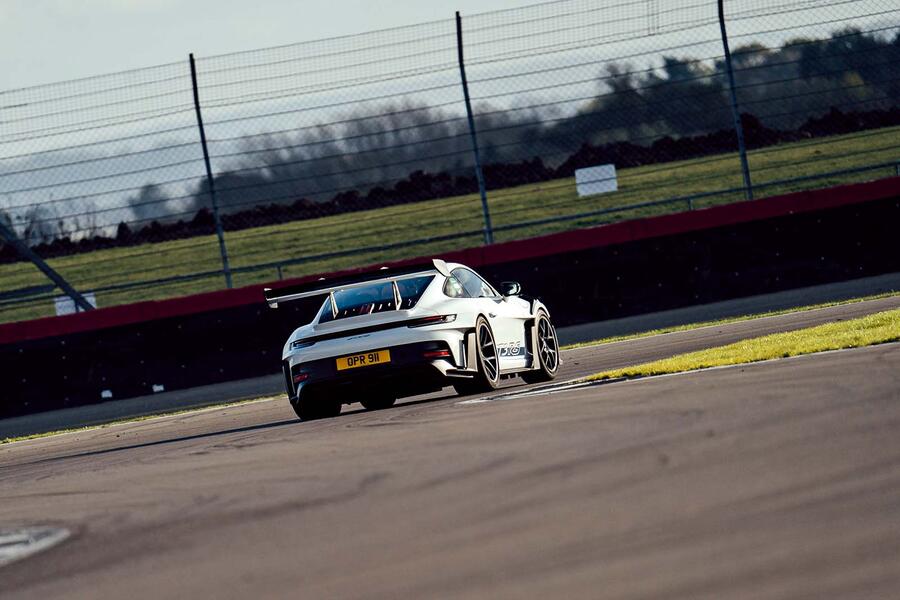
Doing the same in an amateur setting feels just a bit pretentious. Are you really good enough to notice any change and take advantage? Even if you are, does it actually matter?
To learn more, we have come to Silverstone, minds open. It is, after all, easy to snort in derision at the complexity of the driver-configurable ecosystem in the latest RS-series uber-911. In terms of outward appearance, the cabin is hardly the flight deck of Concorde, yet it offers no fewer than 6561 damping combinations.
That isn’t a typo. Compression and rebound can be adjusted independently through nine settings, and for each axle separately.
Add in an ability to play with the diff, which can be tweaked for both power and coast, each through a further nine settings, and the number of set-up permutations balloons to more than half a million.
Factor in traction control presets and the grand total becomes a phone number. And every one of those combinations can be accessed on the fly, from your bucket seat.
How did we get to this point? The Platonic ideal of a driver’s car is something like a Caterham Seven – three pedals and a steering wheel, and only two modes: go and stop.
However, pushing the envelope in terms of flashy tech is a non-negotiable part of shifting metal in the world Porsche’s GT cars inhabit, among the McLarens and Ferraris.
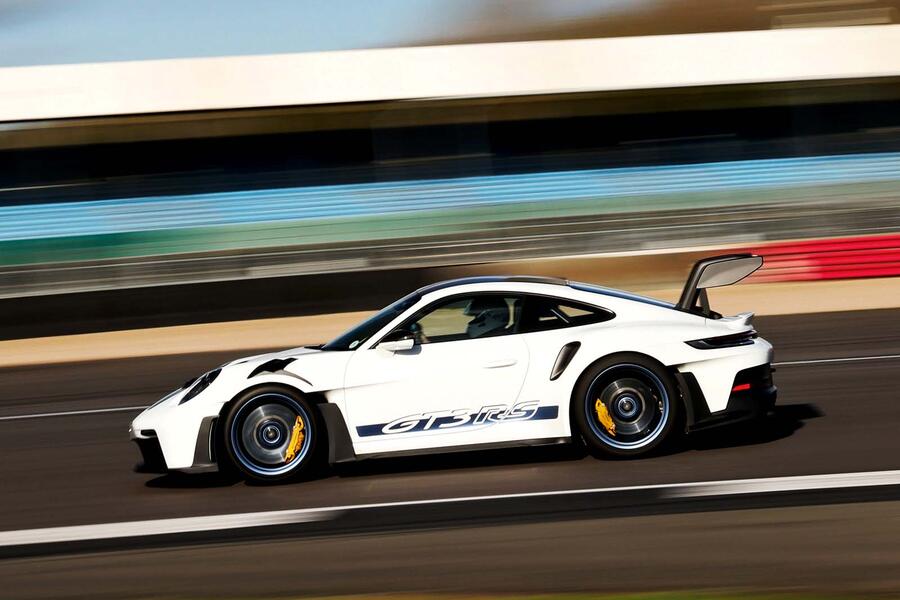
The company also has a deep and ongoing motorsport programme from which it can legitimately draw inspiration. Its journey started in 1987 with the ultra-advanced 959, which was equipped with damper valving controlled by twisting a knob on the centre console.
Over the years, drivers of 911s gradually gained the ability to alter global, general damping response at the touch of a button (the two-way Porsche Active Suspension Management, as it’s known, entered service in 2005) and hydraulic anti-roll bars (Porsche Dynamic Chassis Control, 2012). Progress in this area was steady and, for us mortals, quite easily digestible.
This is no longer the case. When conceiving the new GT3 RS, Porsche knew emissions legislation would stop it from screwing much more power out of the regular GT3’s flat six. So it blew the lid clean off the toy box elsewhere instead.
Result: more downforce than a McLaren Senna and those 6561 damping combinations. The idea was to create a racing-inspired 911 for which no combination of circuit, weather and driving style (within reason!) couldn’t be accommodated by twisting colour-coded dials on the wheel.
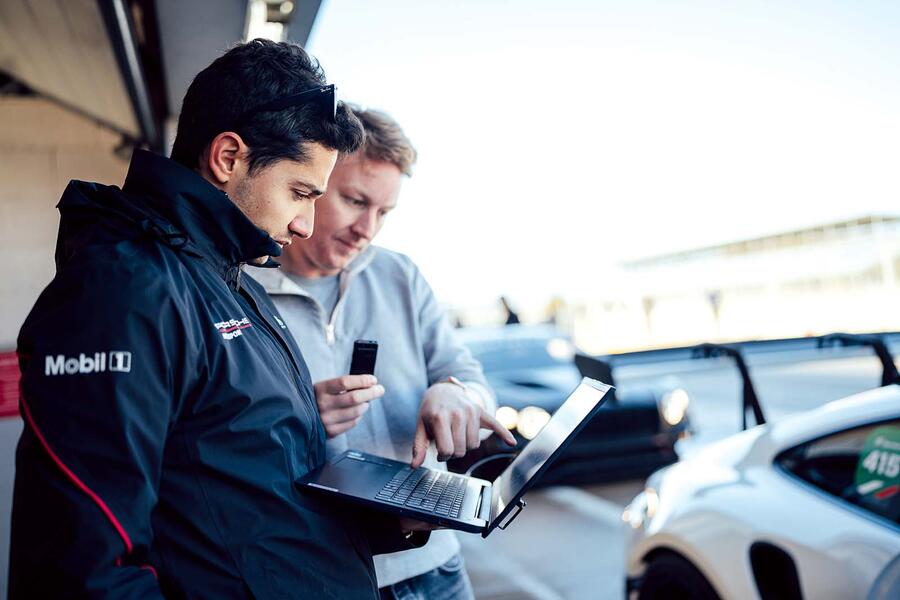
It was always going to take time for us to wrap our brains around the concept, though Andreas Preuninger, father of the GT division, says his team spent “hours and hours” ensuring the system is “accessible, understandable and intuitive”.
Now we have the finished product to hand, does this ability to tinker with dampers and diff truly add to the track-day experience, as the GT3 RS’s epic aero package does? Or is it a fatuous Estre cosplaying tool, to sit alongside the Porsche Motorsport replica race suits you can buy?
The point, according to Alejandro Jimenez (henceforth ‘AJ’, an affable performance and race engineer who gets the best from drivers in the one-make Porsche Carrera Cup series and is ours for the day), is not to try to formulate some predetermined set-up then head out.
There is experimentation involved, yes, but no outright guessing. The point is to get going and then adapt: to weather, to tyre condition, and to the layout of the track and its surface. If you’re listening, your synapses will tell you everything.
The one caveat is that this does assume a level of sensitivity and feel from the driver, plus an ability to focus on several elements.
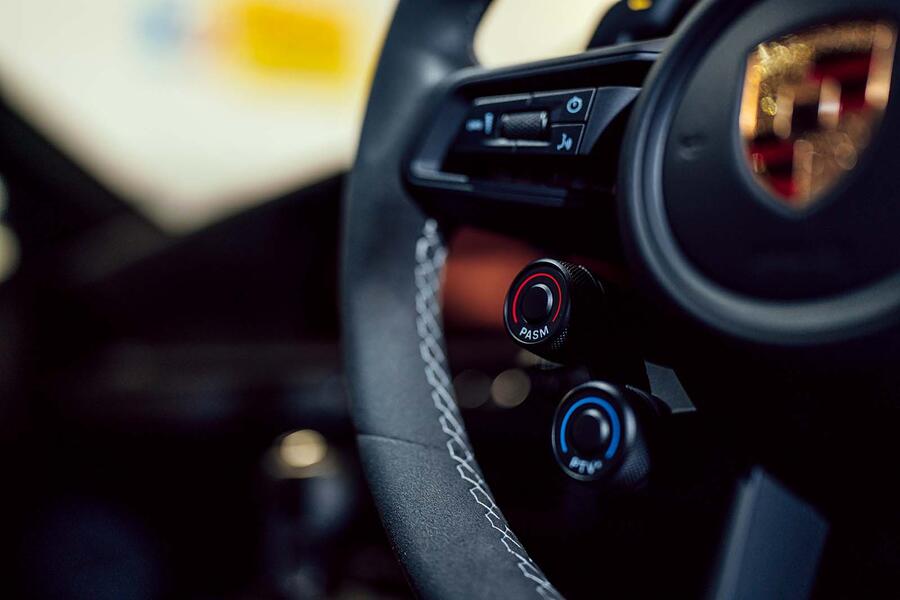
“You have to be a decent driver to use the system,” says Preuninger. “It makes no sense to fumble around.”
Okay, no fumbling, guessing or larking around. Just concentration. I wonder, are we here to have fun, or just to destroy everything in sight, including the off-duty Ferrari 488 Challenge we’re sharing a garage with?
AJ’s very subtle smirk as he says our overriding aim is simply to get “quicker, and quicker, and quicker” suggests it’s probably both.
In terms of raw pace, there are some basics most of us already know. For example, minimal body roll through a fast corner will help maintain the contact patch between tyre and track, which will give you greater grip, greater apex speed and a quicker lap.
All things being equal, in the GT3 RS you’d achieve this by using the steering wheel to dial both bump and rebound up to ‘+4’ on both axles (the scale ranges from ‘-4’ to + ‘+4’, with zero as the baseline).
Job done. Yet what if, in doing so, you made the car a touch snappy and less confidence-inspiring, because the track is a bit cold and greasy? For the amateur, confidence is crucial. Quicker on paper might be slower in practice.
Our first session demonstrates as much. I complete some laps with all settings at baseline before AJ sends me back out onto a track still damp with dew to do some “sweeping”. This means getting familiar with the extremes before working incrementally through the levels of damping force to find an ideal.
I drive four laps with all the dampers completely slackened off (-4 for bump and rebound at both axles) and then four laps with everything amped up (+4 all round). The difference is starker than I expected.
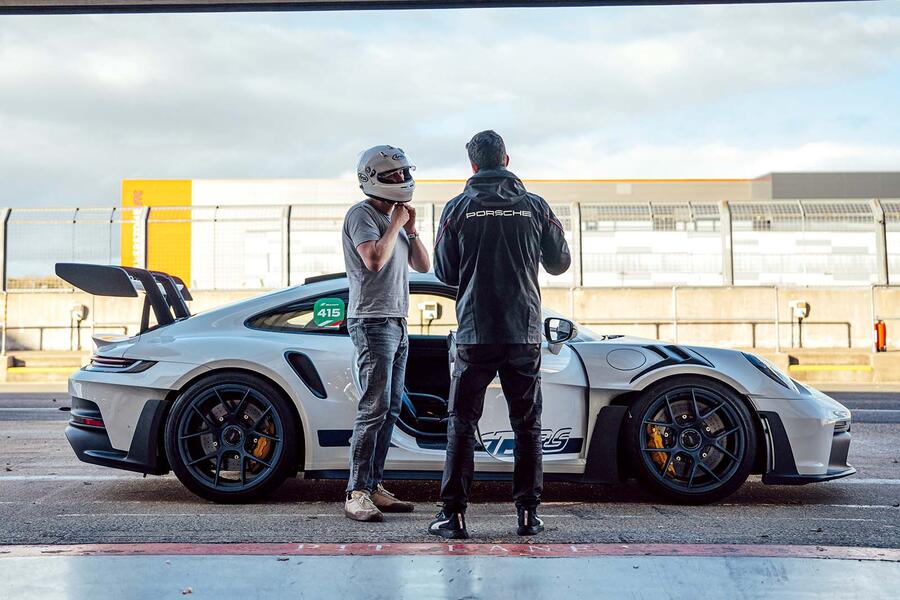
At its softest, the car really is massively lazy, but it’s also an easy machine in which to find flow and balance, and to derive confidence. For reacquainting myself with Silverstone’s GP layout in tricky conditions, it is perfect.
On the other hand, maximising body control results in a car that changes direction like a light being switched on but is clearly more uncomfortable.
Previously fluid cornering lines become syncopated with stutters of oversteer and understeer. Here are two different cars, and only one is allowing me to enjoy myself. The beauty is that we haven’t had to jack the car up once.
Then the racing line dries and the real detail starts. With everything else left neutral, I try a lap isolating front compression first at -1, then a lap at +1, then +3.
Very quickly one becomes sensitive to changes in balance and response, and the simple recognition of these changes brings its own satisfaction. Some tweaks are obvious, front compression being one of them. Get it just so and you instantly bond more closely with the car. That tricky apex is now cleanly spliced, as if by magic. Grip improves.
Other alterations are harder to discern, like rear compression, which seems nowhere near as important to me as rear rebound, which is instrumental in keeping the tail of the GT3 RS planted during heavy trail braking.
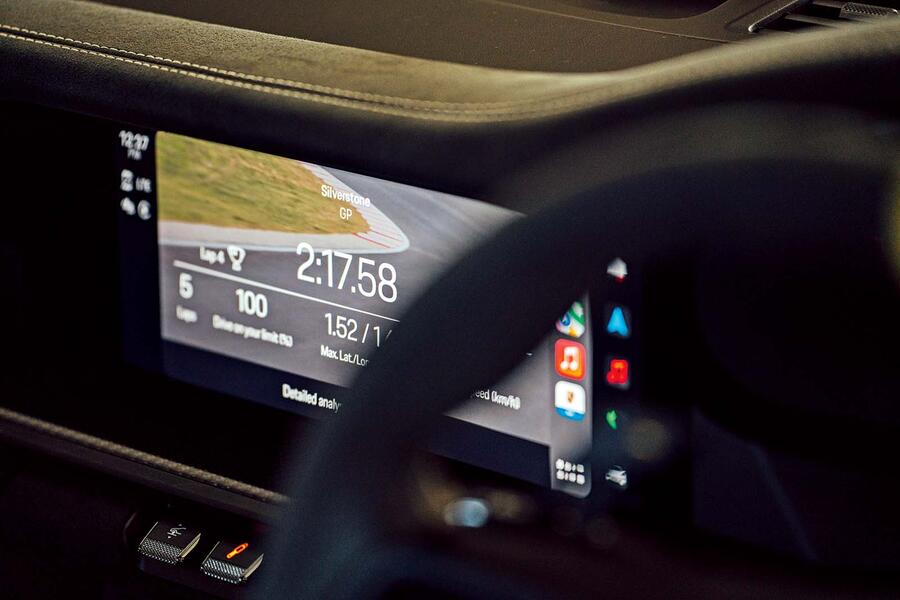
It’s a lot to absorb, but as our sweeping procedure progresses, the car is undoubtedly evolving, becoming ever sweeter. Having isolated every parameter, you throw it all together, and alterations thereafter should be sparing. Reactive, not proactive.
Endless choice can be a burden, of course. With certain parameters, one can fruitlessly sweat minutiae, perhaps imagining things. While you’re off chasing shadows, the chap in the Fiesta ST is having twice as much fun. In the configurable GT3 RS there’s always the danger you’ll spend too much time trying to optimise with tech rather than with hands, feet and extra commitment.
It’s why, as an owner, for the first track day or two I’d leave it all at ‘0’. Get to know the car intimately. Later, I’d use the colour-coded dials like seasoning, remembering the underlying dish is already cooked to near-perfection.
Maybe, at my regular track, or with a whole day on a full GP circuit, I’d undertake an entire sweeping procedure. (Of course, if it’s sopping wet, or your rear tyres have gone off and a softer front axle will balance the car, then get stuck in. The dials will help.)
In extremis, this ecosystem really does alter braking stability, trim out the balance and help you exploit an extraordinarily capable car, but you need to be driving smoothly, and close to flat out, to notice it. You also need to be candid. Was that extra sliver of rotation the result of driving style or was it mechanical?
Whatever the answer, there’s never a dull moment in the GT3 RS and six hours of track time duly evaporates. It has been both joyful and an unusual vestibular workout.
There remains a sense that the GT3 RS’s new-found configurability is the answer to a question nobody asked. And yet agonising over tiny details is addictive. It’s why your track-day-going MX-5 fancier will fret over camber with the zeal of a CERN researcher.
Porsche’s chassis controls are no different in ethos but they make life easier and more colourful for inveterate track-day nerds. Pretending you’re Estre on a red-hot quali lap is part of the fun.


